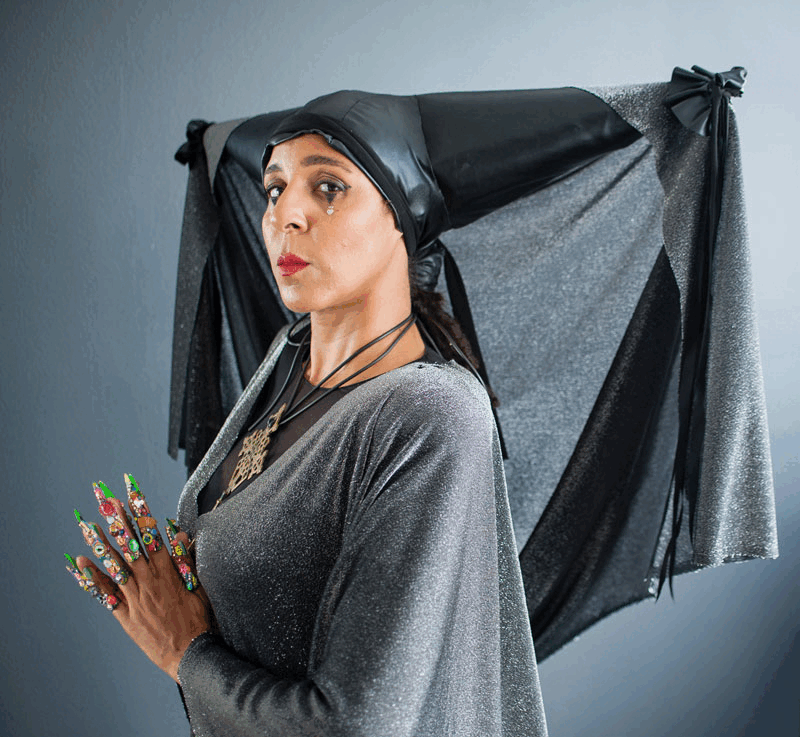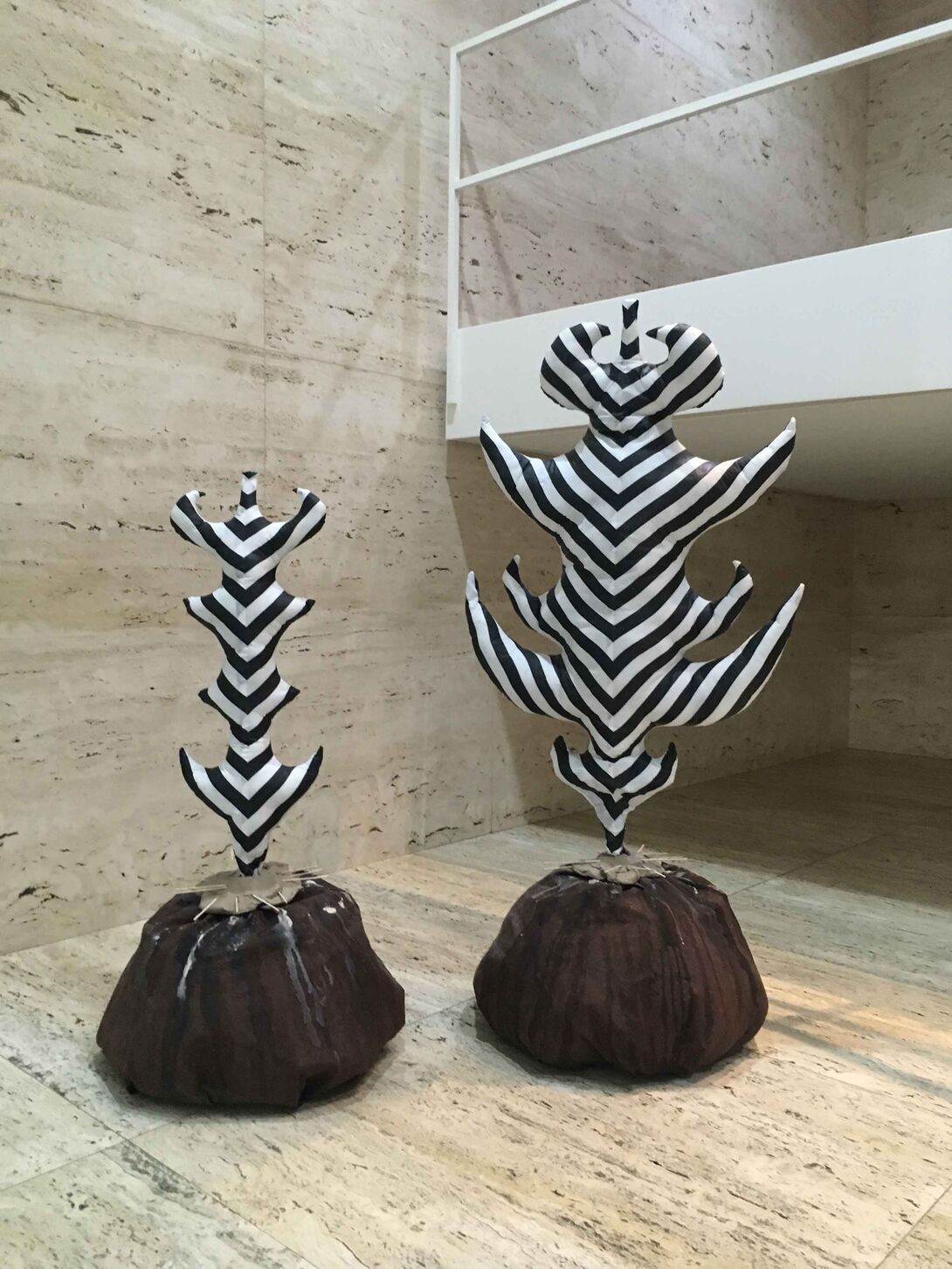
Stars Align for D. Denenge Duyst-Akpem

by Adrienne Samuels Gibbs
When you consider Chicago's Afrofuturism lineage, perhaps you think of Nichelle Nichols, who portrayed Commander Uhura on Star Trek. That leads to Dr. Mae Jemison, who graduated from Nichols’ South Side high school and became the first Black woman astronaut. And Jemison's work points directly to School of the Art Institute of Chicago Adjunct Assistant Professor D. Denenge Duyst-Akpem (MFA 2004), known for her classes on Afrofuturism and her most recent groundbreaking work of art performed at the invitation of NASA at the Library of Congress’ Becoming Interplanetary: What Living on Earth Can Teach Us About Living on Mars.
"We're always just entering into the future," says Duyst-Akpem, who often mentions her forbearers when discussing her work and her course on survival and the writings of Octavia Butler, the only science fiction writer to receive a MacArthur “genius” grant and the first prominent Black woman writer in the genre. "Afrofuturism is not just science fiction, it's basically a holistic practice."
The idea that space travel, psychic ability, real wealth, and stellar health—either here or elsewhere—could be created by Black people is a radical thought for some, she says. But not for her, and not for generations of Black Americans who have survived and thrived. That's why in her Professional Practices seminar course, Duyst-Akpem encourages exploration of Butler's novels and Jemison's triumphs paired with questions about the self, construction of the “other,” and how to be better stewards of Earth before moving on to other planets. But the study is also of mental and physical freedom from institutions that hold Black people back. That includes real talk about a living wage for creatives, cultivation of joy as resistance, and creating art that supports those ideals. The class final is an exhibition of mapping systems, travel journals and survival tactics.
These sensibilities were in many ways guided by Duyst-Akpem's upbringing in the tiny town of Mkar, Benue State in Nigeria. She came up in the theater and trained as a jazz singer. Her BA is from Smith College. She moved to Chicago more than two decades ago and earned her MFA from SAIC before starting work at the School as a program coordinator for VAP and later as an educator.

For Duyst-Akpem, childhood brought an understanding of all things related to her Tiv and cross-cultural identities and making art with what you already have. Today, her life is all about spiritual awareness paired with performative Afrofuturism, which helped the artist build a studio, an interior design practice, a book series and essays on Black futures, a forward-thinking clothing line, and her fall 2018 performance for Becoming Interplanetary, part of the NASA Decolonizing Mars symposium at the Library of Congress.
Lately, Duyst-Akpem has been thinking about Jemison’s 100 Year Starship initiative to make travel beyond the solar system possible in the next 100 years and make life better on Earth. The organization believes that the breakthroughs and technology required for interstellar travel are the same ones required for survival on Earth. She is also thinking about interstellar journeying and what that means for Jemison’s mission. “What do you do when you're establishing something you may never see?” she asks. “What does it mean to fight for liberation when you know you may never see it?" These are questions she sees as rooted in Black histories and Afrofuturism as means of Black liberation.
For the artist, this year is a "whirlwind" of dreams come true and invitations to perform and write for nearly everyone from her Ramm Riff project at Red Bull Arts in New York to a special curatorial collection of Black art that debuted in fall 2018 at the DuSable Museum of African American Art in Chicago.
"There are different ways that I try to understand my value, understand the way that Afrofuturism can operate as an embodiment of intentional practice," she says. "It's always about liberation at the root. Radical joy is a radical act."
